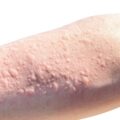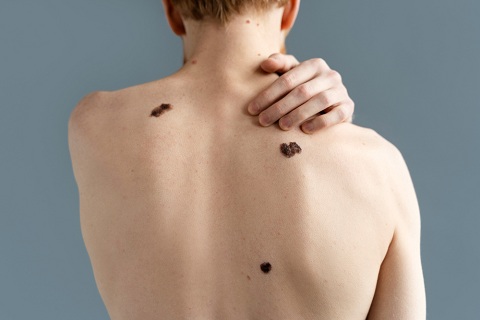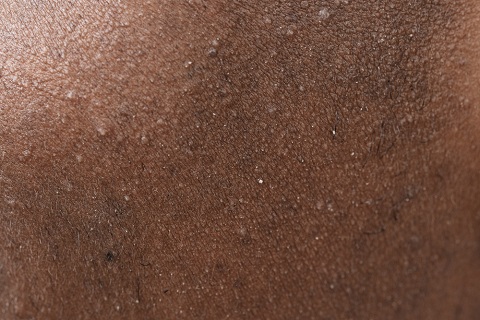Cold injuries, due to exposure to obessive cold, there is intense vasoconstriction, and this is further reinforced by the passage of cold blood. In this comprehensive guide, we delve into the intricacies of cold injuries, exploring their types, causes, symptoms, treatments, and prevention strategies. Whether you’re an outdoor enthusiast, athlete, or simply someone concerned about staying safe in cold environments, this article is a must-read to equip yourself with the knowledge needed to protect against cold-related harm.
Types of Cold Injuries
Frostbite
Frostbite, a common cold injury, occurs when skin and underlying tissues freeze due to prolonged exposure to cold temperatures. It typically affects extremities such as fingers, toes, ears, and nose. Symptoms include numbness, tingling, discoloration, and pain in the affected area. Severe cases may lead to tissue damage and even amputation if left untreated.
Hypothermia
Hypothermia occurs when the body loses heat faster than it can produce, causing a dangerously low body temperature. Symptoms progress from shivering and confusion to loss of coordination, slurred speech, and unconsciousness. Severe hypothermia can be life-threatening and requires immediate medical attention.
Chilblains
Chilblains, also known as pernio, are painful inflammatory skin lesions that develop in response to repeated exposure to cold, damp conditions. They typically affect the fingers, toes, ears, and face, causing redness, itching, swelling, and blistering. While not as severe as frostbite, chilblains can be uncomfortable and may lead to complications if left untreated.
Acrocyanosis
This is a condition where there is persistent cyanosis, with coldness and hyperhidrosis of the affected parts. While often benign, acrocyanosis can be a cause of concern for individuals experiencing symptoms or seeking clarification about this condition. In this comprehensive guide, we delve into the intricacies of acrocyanosis, exploring its causes, symptoms, diagnosis, and management strategies.
Erythrocyanosis Crurum
In this condition the circulatory disturbance (arteriolar spasm with dilatation of venules) affects the legs and thighs of young girls and women. While relatively rare, erythrocyanosis crurum can be a source of discomfort and concern for individuals experiencing symptoms or seeking information about this condition. In this comprehensive guide, we explore the causes, symptoms, diagnosis, and management of erythrocyanosis crurum to provide a better understanding of this vascular disorder.
livedo Reticularis
It is a skin condition where there is a blotchy, mottled or reticulated pink or bluish red discoloration of the skin, on extremities, espicially the feet and legs. While often benign, livedo reticularis can be a source of concern for individuals experiencing symptoms or seeking information about this condition. In this comprehensive guide, we delve into the causes, symptoms, diagnosis, and management of livedo reticularis to provide a better understanding of this dermatological disorder.
Causes of Cold Injuries
Cold injuries are primarily caused by exposure to cold temperatures, but several factors can increase the risk:
- Extreme Weather: Exposure to freezing temperatures, especially in windy or wet conditions, increases the risk of cold injuries.
- Inadequate Clothing: Failure to dress warmly or protect exposed skin can leave individuals vulnerable to cold-related harm.
- Poor Circulation: Conditions such as diabetes or peripheral artery disease can impair blood flow to the extremities, increasing the risk of frostbite and chilblains.
- Alcohol and Drug Use: Alcohol and certain medications can impair the body’s ability to regulate temperature, making individuals more susceptible to hypothermia.
Symptoms of Cold Injuries
Recognizing the symptoms of cold injuries is crucial for prompt intervention and treatment. Common symptoms include:
- Frostbite: The ears, nose , cheeks, fingers, and toes are most often affected. The affected part first appears cold and bluish red. Numbness, tingling, discoloration (white, blue, or gray skin), stiffness, and pain in the affected area.
- Hypothermia: Shivering, confusion, slurred speech, lack of coordination, drowsiness, and unconsciousness.
- Chilblains: People with poor peripheral circulation and sometimes with weak general health, are the victims. It is more common among females than males. Redness, itching, swelling, blistering, and pain in the affected area.
- Acrocyanosis: The hallmark symptom of acrocyanosis is persistent bluish discoloration of the hands and feet, which may be accompanied by other signs and symptoms: Bluish skin, Coldness and Moisture, Swelling, Pain or Discomfort etc.
- Erythrocyanosis Crurum: The primary symptom of erythrocyanosis crurum is the persistent redness and blueness of the lower extremities, particularly the calves and ankles. Additional symptoms may include: Reddish-Purple skin, Warmth and Swelling, Itching or Burning:
- Livedo Reticularis: The primary symptom of livedo reticularis is the characteristic mottled, net-like pattern of reddish-blue discoloration on the skin. Additional symptoms may include: Net-Like pattern, Discomfort or pain, Worsening with cold.
Prevention Strategies
Preventing cold injuries requires proactive measures to minimize exposure and protect against the elements:
- Dress Appropriately: Wear layers of warm, moisture-wicking clothing, including hats, gloves, and insulated footwear.
- Stay Dry: Change out of wet clothing promptly, and use waterproof gear to shield against rain, snow, and wind.
- Take Breaks: Limit time spent in cold environments, and take frequent breaks indoors to warm up and rest.
- Stay Hydrated: Drink plenty of fluids, avoiding alcohol and caffeine, which can dehydrate the body and impair circulation.
- Know Your Limits: Recognize signs of cold-related stress or discomfort, and seek shelter and assistance if needed.
- Physical Activity: Engaging in regular physical activity and maintaining a healthy lifestyle can promote overall circulation and reduce the frequency and severity of symptoms.
- Temperature Regulation: Avoiding exposure to cold temperatures and keeping the hands and feet warm can help prevent vasoconstriction and reduce the severity of symptoms.
Faqs about Cold Injuries
Cold injuries are classified into three main categories: frostbite, non-freezing cold injuries (such as chilblains and trench foot), and hypothermia.
Another name for cold injury is “cold-related injury” or “cold-induced injury.”
The three classifications of injuries commonly associated with cold environments are frostbite, non-freezing cold injuries (such as chilblains and trench foot), and hypothermia.
The risks of cold injury include frostbite, non-freezing cold injuries, and hypothermia. These conditions can occur when exposed to cold temperatures for prolonged periods, especially when combined with factors such as inadequate clothing, wet conditions, or certain medical conditions.
Conclusion
Cold injuries are not to be underestimated, as they can have serious consequences for individuals exposed to cold temperatures. By understanding the types, causes, symptoms, treatments, and prevention strategies associated with cold injuries, individuals can take proactive steps to protect themselves and others from cold-related harm. Whether venturing into the great outdoors or simply braving a chilly commute, knowledge and preparation are key to staying safe and healthy in cold environments.





